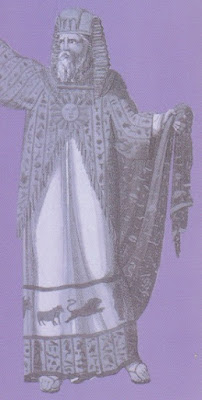THIRTEENTH CENTURY BCE (1299-1200)
c1290 BCE In Egypt, pharaoh RAMESSES II (1304-1237) and joint wives Nefertari and Isnofret are ruling the country. Ramesses II is the 13th son of Sethos I, and thus known as the Ombite, for he is a follower of the ancient god Seth. Ramesses worships 57 ancestors as indicated on the king list of the ‘Table of Sakkara’. ‘Rameses the Great’ as this pharaoh is known, is a Master of one of the principal esoteric lodges of the day.
Rameses II and his Queen Nefertari
Ramesses II engaged in major rebuilding at Ihnasya el-Medina, ancient Henen-nesut, (Greek Herakleopolis named after the hero Herakles). Such rebuilding included that at the temple of the ram headed god Harsaphes, anciently known as Herischef, ‘He who is on his Lake’. The earliest monuments of this area date from the 12th Dynasty. indicating its long-term importance to the Egyptian religious cults. Rameses II built two other temples at Abu Simbel, the Great Temple to Ptah, and the smaller temple to the goddess Hathor and to his wife Nefertari.
This great pharaoh was active in regaining many territories and power for Egypt and in this effort there is much communication with Asyrian and Hittite Empires.
The annals of Rameses II specify that at this time a Semitic people were settled in the land of Goshen after leaving Canaan during a famine. The Bible says that this event occurred three centuries earlier; perhaps there were two famines, an earlier one as experienced by Joseph (1840 BCE) and now a second in the Ramesses period.
Engraving by Filippo Pistrucci [1816]
[Jan Assmann 'Moses the Egyptian']





No comments:
Post a Comment